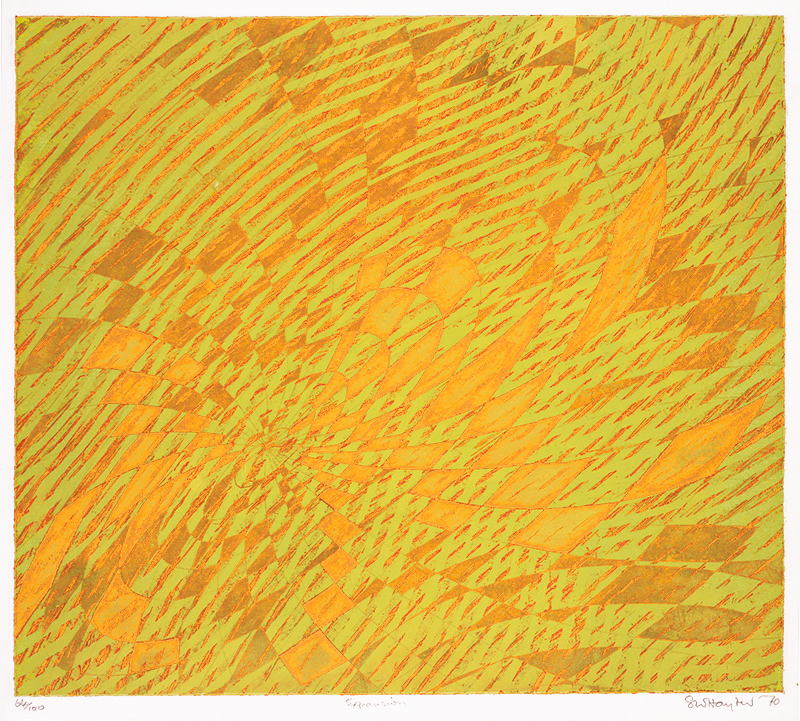
19th, 20th & 21st Century Fine Prints
707-546-7352 · fax 707-546-7924 · web: www.annexgalleries.com · email: artannex@aol.com
Expansion by Stanley William Hayter

Expansion
Stanley William Hayter
Expansion
Stanley William Hayter
1901 - 1988 (biography)Stanley William Hayter continued to examine and experiment with different materials and methods, as with "Expansion", done in 1970 at age 69. Using the concept of an expanding vortex Hayter puts a universal question of growth into a visual possibility. His colors got brighter and more electric, even fluorescent and moved in crisscrossing, rhythmic movement. He utilized all the simultaneous printing methods that the printmakers at Atelier 17 had developed in the previous 30 years.
In the second state the plate was covered again and the sheet cut then etched with a deep bite and soft ground texture was added. The plate was printed intaglio with fluorescent orange and phthalo green and a transparent yellow with a soft roller. The artist was assisted in the printing by Hector Saunier.
Stanley William Hayter was born in Hackney, England on December 27, 1901, to a family of artists. Though always interested in art, he began his adult life as a chemist and scientist. After working in the oil fields of Iran for three years, he went to Paris in 1926 to study at the Académie Julian. There he met the engraver Joseph Hecht and began to merge his early training in chemistry with a new found interest in printmaking.
Hayter spent most of his life in Paris where, in 1927, he founded an experimental workshop for the graphic arts, Atelier 17, that played a central role in the twentieth century revival of the print as an independent art form. The name Atelier 17 was adopted in 1933 when Hayter moved his establishment from its original home to 17 Rue Campagne Première. Through the late 1920s and into the 1930s he began a series of experiments using engraving, soft-ground etching, gaffrauge, open-bite, scorper and other innovative, textural techniques, all loosely based on the Surrealist/Jungian concepts of subconscious image and automatic line (Automatism). Artists from around the world gathered to work with him and ideas flowed freely. Hayter and most of the artists left Paris in late 1939 as war closed in on the city.
In 1940 Hayter moved to New York and re-founded Atelier 17 at the New School, moving to a studio on East 8 Street in 1945. The studio again became a melting pot for the artists who had arrived from Europe, American artists (many who had been part of the printmaking section of the WPA), and some young rebels (interested in breaking with the past and experimenting with technique and ideas). The emphasis in New York focused more on experimental color printing, including the use of viscosity printing and offset color using screenprint, stencil and woodcut. As in Paris, the salability of the image was near the bottom of the list of expectations.
Hayter returned to Paris in 1950 and re-established Atelier 17, attracting more international artists, many now coming from Asia. He continued to experiment with color printing, including the use of Flowmaster pens, incongruous and fluorescent colors and flowing, interwoven patterns. With an unrivaled knowledge of the technicalities of printmaking, Hayter authored two major books, New Ways of Gravure (1949) and About Prints (1962).


